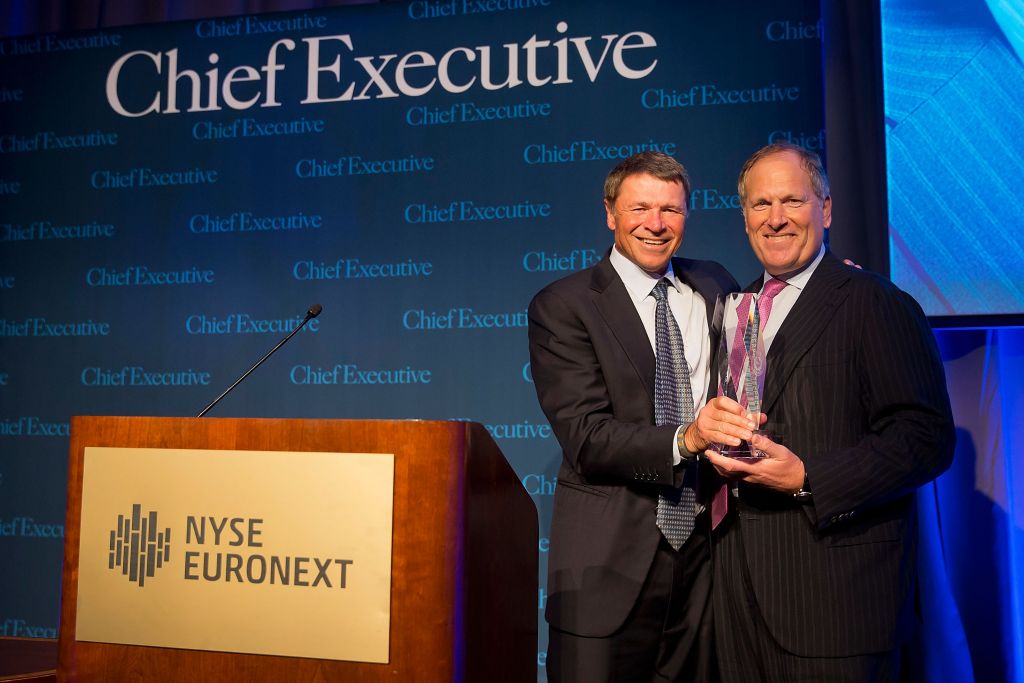
Honeywell Chairman and CEO Dave Cote (right) accepts Chief Executive Magazine’s 2013 CEO of the Year award from the 2012 recipient, Yum! Brands CEO David Novak (left). (Ben Hider/NYSE Photography/Wikimedia Commons CC 3.0)
A new report out this week from the Institute for Policy Studies dives into the gap in retirement assets between the CEOs of America’s Fortune 500 companies and the retirement savings of average Americans, providing a first-of-its-kind look at another dimension of America’s growing wealth gap. Retirement accounts, it turns out, show a far larger disparity than the already quite large gap between CEO and employee compensation. The report’s big takeaway is that the country’s 100 richest CEO’s company-sponsored retirement assets, when added together, are equal to those of 41 percent of American families (50 million families in total).
David Novack, CEO of YUM Brands — the parent company of fast food chains Taco Bell, KFC and Pizza Hut — has the largest amount saved for the future: $234 million. (Many employees of YUM chains have no retirement assets at all, the report’s authors point out.) Richard B. Handler of conglomerate Leucadia National is runner-up with $201 million, and Honeywell’s David Cote comes in third with $168 million.
Many of these Fortune 500 CEOs, the report found, use tax-deferred compensation accounts that are not subject to the same rules as 401(k)s, including annual contribution limits. The report found that these CEOs have a collective $3.2 billion saved in such accounts, and saved $78 million in taxes in 2014 by using them.
Compare that with the rest of America: Half of private sector workers are not offered retirement plans through their job. Thirty-seven percent of working-age white Americans, 62 percent of African-Americans and 69 percent of Latino Americans don’t have any retirement savings. (That racial disparity, it turns out, also applies to Fortune 500 CEOs: White men hold the 10 largest CEO retirement funds, which taken together total $1.4 billion. The top 10 CEOs of color hold $196 million. Female CEOs hold $280 million.)
You can read the entire report — A Tale of Two Retirements — at the Institute for Policy Studies website.


